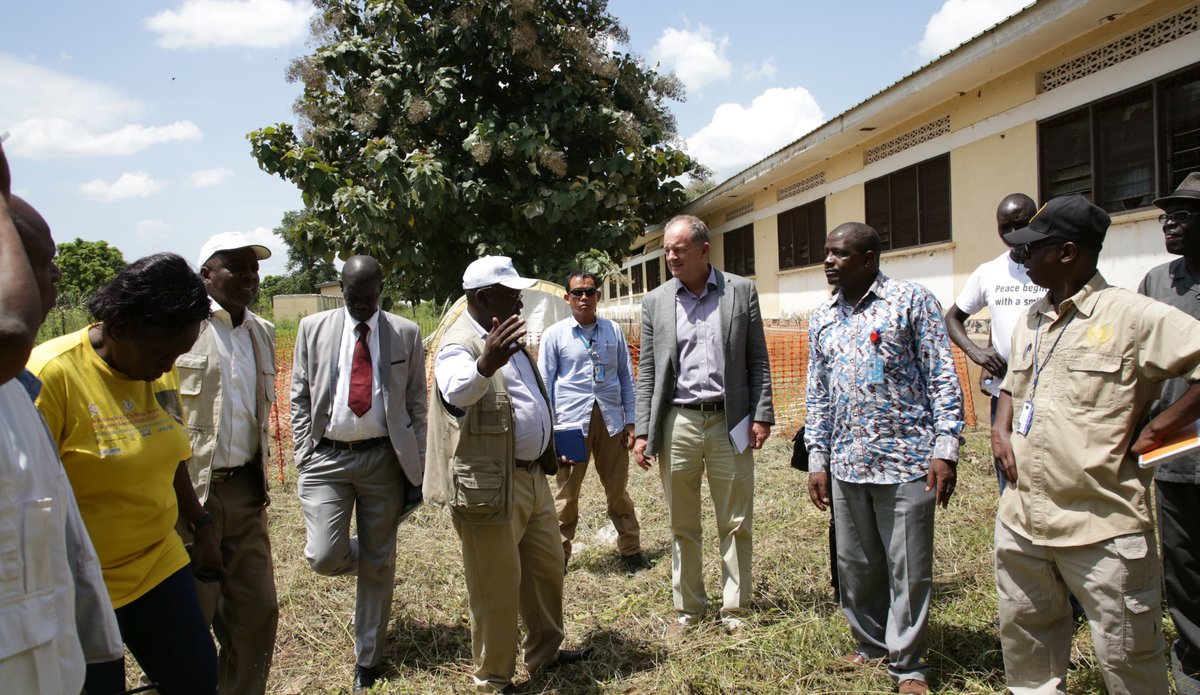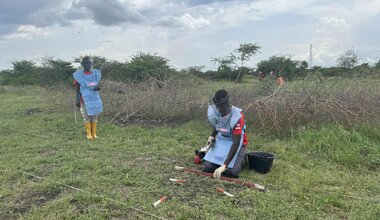Planning underway to manage risk of Ebola Virus Disease in Yei
While its peaceful now, there is plenty of activity underway to prepare for that to change, if the Ebola Virus Disease migrates to South Sudan from neighbouring Democratic Republic of Congo, where an outbreak is affecting communities about 300 kilometres away from Yei.
The risk of Ebola spreading has been declared “very high” by health authorities, requiring nearby countries to develop and test operational readiness for a potential response. A national taskforce has been set up by the South Sudan government with the support of the World Health Organization and other UN agencies to raise public awareness and develop a contingency plan.
In Yei, a major problem is the porous border between the countries. Just three of the 15 main routes are currently being surveilled for the virus, and most people, including many refugees, slip across via unofficial routes as violent conflict continues to affect both sides.
“That creates a very big risk. You find that, while there are official entry points with checkpoints, people are using other unofficial entry roads,” said Medical Officer Dr Joice Dominic Rlazario. “It’s been good up till now because we don’t have any cases of Ebola within Yei River but, if there is any case that enters, it will be very challenging tracing those people who come through the porous borders.”
Ebola is a very serious disease that can kill in a short period of time. But it can also be prevented by avoiding direct physical contact with someone infected and their body fluids, washing hands thoroughly with soap and water, avoiding communal handwashing during funeral rites and ensuring anyone who dies from Ebola is buried immediately by a trained team.
In Yei, an isolation area has been established at the hospital and clinicians are being trained. Surveillance is underway at the airstrip and there are house-to-house mobilization efforts to educate people about prevention. But ongoing fighting between armed groups in the area is limiting the reach of health professionals.
The Special Representative of the Secretary-General and Head of the UN Mission in South Sudan, David Shearer, was briefed on the issue by health professionals and local authorities during a visit to the area.
“Ebola knows no boundaries,” he said. “It will run right across fighting groups and just keep on going, so we have to be able to get out to those people in the opposition-held areas and be able to do the same sort of awareness and the same sort of training that we are doing in the government-held towns and around the hospitals.”
There is also an urgent need for funding for a dedicated ambulance to respond to potential cases as the hospital’s only vehicle has broken down.
“As we are speaking now, if a case came, or a suspected case was identified, or we got an alert, we don’t have a vehicle where we can transport that patient from the site to the isolation facility,” said Dr Joice Dominic Rlazario.
She is grateful for the support provided by the World Health Organization and UN agencies but hopes that government and opposition forces will now work together to silence the guns so that an adequate prevention and action plan can be put in place.
“We thank God that we have a new peace agreement, but we pray that it comes quickly to Yei so that we can make sure that Ebola does not,” she said.
 UN
UN United Nations Peacekeeping
United Nations Peacekeeping





